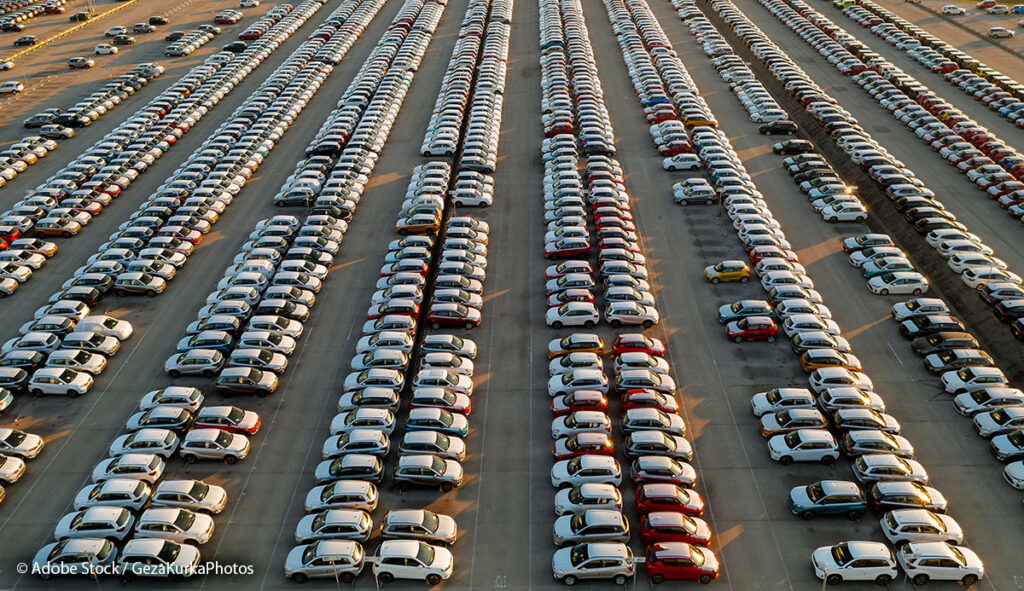The EU’s CO2 emissions reduction targets for new passenger cars will not be achievable as long as important prerequisites are missing according to an audit report published last week by the European Court of Auditors (ECA).
The report highlights four main findings. As CO2 emissions are measured in laboratory tests and declared by manufacturers, they do not reflect reality. Real-world emissions from conventional cars have not fallen. Car manufacturers have avoided paying billions of euros in excess-emission premiums. Electric cars appear to be the key driver of change, but sales are not growing fast enough.
In fact, CO2 from the transport sector has continued to grow contrary to other sectors. In 2021, it accounted for 23 % of the EU’s total greenhouse gas emissions, with passenger cars responsible for more than half of this figure. New laboratory tests, following the ‘Dieselgate’-scandal, narrowed but did not eliminate the gap between laboratory and real-world emissions, according to the auditors.
“The EU’s green revolution can only happen if there are far fewer polluting vehicles, but the challenge is huge”, said Pietro Russo, the Italian ECA member in charge of the audit, at a virtual press briefing. “A true and tangible reduction in cars’ CO2 emissions will not occur as long as the combustion engine prevails, but at the same time, electrifying the EU’s car fleet is a major undertaking.”
The auditors analyzed emission data since 2010 when the Cars CO₂ Regulation” entered into force. The regulation set an EU fleet-wide target for average CO2 emissions from newly registered cars. Overall, most passenger cars on EU roads still emit the same quantity of CO2 as before.
Real emissions from conventional cars – which still account for nearly three-quarters of new vehicle registrations – have not dropped, the auditors noted. Over the last decade, emissions have remained constant for diesel cars, while they have marginally decreased (-4.6 %) for petrol cars.
ECA found shortcomings in the way how emissions are measured, checked by the national authorities, reported to the Commission and used by the Commission. Two of the authorities in three selected member states failed to report data in time but were not sanctioned. The clearing of data is a cumbersome process and does not assure data quality, according to the audit team.
On a positive note, some reduction in emissions took place during the COVID-19 pandemic and when more stringent emission targets started to apply for new vehicles from 2020. The auditors claim that this is primarily due to the significant uptake of electric vehicle. From a tiny share of 1 % of electric vehicles in new car registration in 2018, the uptake has increased to 13.5 % in 2022.
E-vehicles game changer
For the EU auditors, only e-vehicles have driven the reduction in average on-the-road CO2 emissions witnessed in recent years and they could become a game changer in reaching the targets. The auditors do not believe that the targets can be reached with combustion engine cars. But the road ahead is bumpy, as the EU faces significant difficulties in accelerating the uptake of electric vehicles.
ECA identified access to raw materials for the batteries and inadequate charging infrastructure as the two main obstacles. 70 % of all charging stations in the EU are concentrated in just three countries (the Netherlands, France and Germany). The density of charging points (number of charging points per 10 000 vehicles) varies by member state, with the lowest density in southern and eastern Europe.
The auditors highlighted the problem with plug-in hybrid cars that use both electric and combustion engine powertrains. They have been classified as low-emission cars which enabled car manufactures not having to pay excess-emission premiums. In fact, real-world CO2 emissions for hybrid cars tend to be much higher than those recorded in the laboratory.
The combustion engine in hybrid cars is used more frequently than expected, in particular for company-owned plug-in hybrids, the auditors explained. In this type of situation, companies usually pay for the fuel, so there is no financial incentive for employees to recharge the batteries. The proportional use of electric and combustion engines will be adjusted, but only from 2025.
“We don’t consider hybrid cars to be low-emission cars and the designation should end from 2025,” the audit team said. “In reality, they don’t pollute less than combustion engine cars and we foresee a phase-out of hybrid cars.”
Commission optimistic
Since 2022, the Commission has been collecting information on real-world emissions from on-board fuel consumption meters installed in new vehicles. It therefore has information available on the extent of the gap between laboratory and real-world emissions for new vehicles registered from 2021 onwards and would be able to monitor and take some action if this gap were to increase again.
The Commission largely agrees with the audit findings and accepted all the recommendations, including changes to the Cars CO₂ Regulation.
Among others it agreed to the observation that the reduction of the average new vehicle CO2 emissions on the road in the past years can be mainly attributed to the increased uptake of electric vehicles, while no significant progress could be observed in the average fuel efficiency of conventional vehicles, in a context where the average vehicle mass and engine power increased.
““It is clear that the transport sector must reduce its emissions significantly,” a Commission spokesperson told The Brussels Times. According to the spokesperson, the new standards put in place in recent years has accelerated the reduction in CO2 emissions in new cars. In 2022, the average reduction was 27 % compared to 2019 levels.
The Commission will soon publish a first report based on real measurement data collected from the fuel consumption meters installed in new vehicles. A regards hybrid cars, the gap between declared and real emissions is expected to be closing.
M. Apelblat
The Brussels Times

